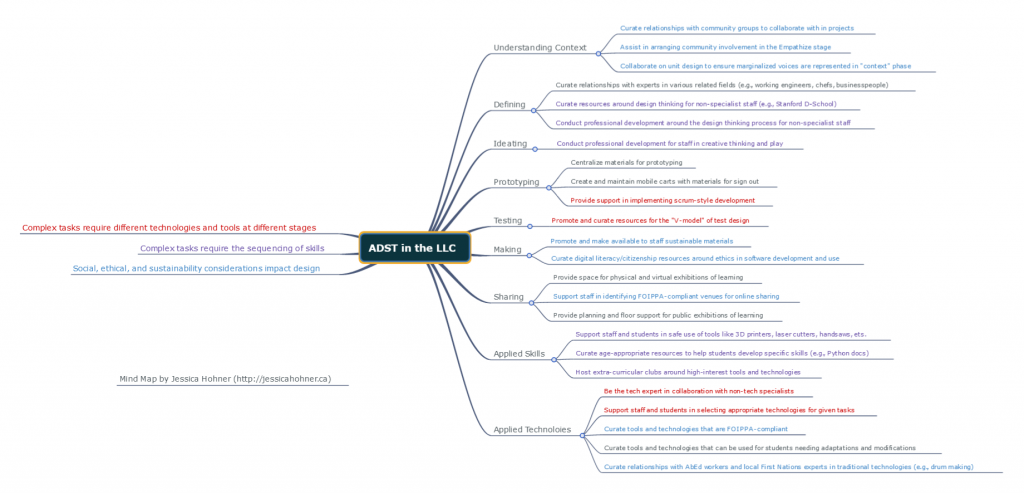
I found that my thoughts mostly steered toward curation and professional development. I feel like I have a lot of specific skills in ADST and familiarity with processes (e.g., V model, Scrum) around software development to offer to my colleagues which may be applicable in other areas. I’ve colour coded ideas that I feel connect to the Big Ideas, and those around professional development tended to be assigned “Complex tasks require different technologies at different stages” because I felt that teachers need to have a solid understanding of the stages to teach what is needed at those stages.
Sources
BC Ministry of Education. (n.d.). Applied Design, Skills, and Technologies 9. Building Student Success – B.C. Curriculum. https://curriculum.gov.bc.ca/curriculum/adst/9/core
Firesmith, D. (2013, November 11). Using V Models for Testing. SEI Blog. https://insights.sei.cmu.edu/blog/using-v-models-for-testing/
Brown, T. (2008). Tim Brown: Tales of Creativity [Web video]. TED. https://www.ted.com/talks/tim_brown_tales_of_creativity_and_play
(Victoria Y.) Hi Jessica, the mind map is wonderfully organized. I found it easy to understand, and the colour-coding is helpful to further organize your tasks/actions. I noticed that you talked about professional development and support for staff; did you have any ideas on further collaborations with teachers that would have you or the library more deeply invovled in the classroom?
And perhaps this question may not apply to your current teaching context, but in the school I am at, there is a very strong ADST program. Do you have any concerns over redundancy in the library programs and the ADST department?
Hi Victoria,
Since I am an ADST specialist, I suppose part of the reason I like the idea of having the library become a centralized space for ADST is that it can help facilitate interdisciplinary approaches with non-ADST teachers and act as a facilitator between different specialty areas. The ADST teacher (my own bizarre position notwithstanding) are full-time teachers who may not be able to bring, for example, programming expertise into someone else’s classroom, but the librarian can be an intermediary here. Do we feel like the library’s literacy programs are redundant because English teachers exist?
I think that you actually brought up a good point in your comment on another post of mine – you mentioned that having ADST teachers collaborate with the library takes the burden off of one person and leverages their expertise.